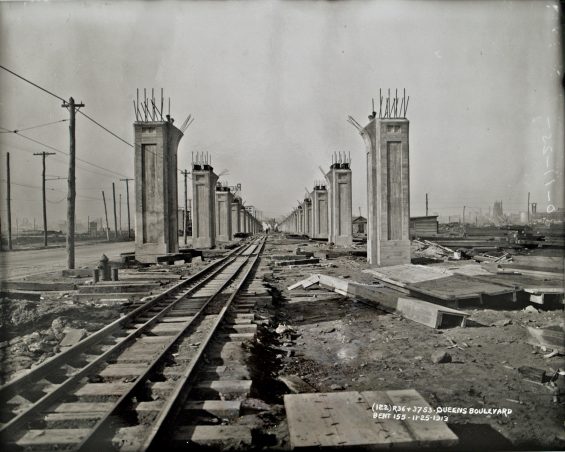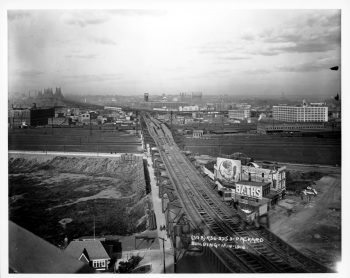
July 25, 2017 By Jason Cohen
A new exhibit that examines the impact of the 7 train on the borough of Queens opens next week at the New York Transit Museum Grand Central Gallery Annex and Store.
The exhibit, titled 7 Train: Minutes to Midtown, looks at the 100-year history of the borough’s first subway line– from its beginnings at the Steinway Tunnel to the most recent station, 34th Street – Hudson Yards.
The exhibit will be on display from Aug. 3 through Oct. 29. The museum is open Monday through Friday, 8 a.m. to 8 p.m.; Saturday and Sunday, 10 a.m. to 6 p.m.
Artifacts on display include current and original images of the 7 Train, a New York and Long Island City ferry ticket from the late 1800s, station wayfinding signs dating from between 1928 and 1949 and a Queensboro Bridge Railway token from 1945.
The Interborough Rapid Transit (IRT) Flushing line, now known as the 7 Train, sparked a real estate boom nearly 100 years ago that transformed rural Queens into vibrant neighborhoods with diverse communities, according to a press release put out by the museum.
More than a century later, the line’s extension to the far west side of Manhattan is spurring change once again with skyscrapers surrounding the new Hudson Yards station complex.
 The Flushing Line was designed to encourage growth and allow the city to expand eastward, creating more affordable housing and easing overcrowding in lower Manhattan, according to the museum. The 7 train promised a short trip to Manhattan and quickly prompted a migration to Queens. Between 1910 and 1930, the population of Queens increased by nearly 300 percent, from 284,000 to 1,079,000, according to the museum.
The Flushing Line was designed to encourage growth and allow the city to expand eastward, creating more affordable housing and easing overcrowding in lower Manhattan, according to the museum. The 7 train promised a short trip to Manhattan and quickly prompted a migration to Queens. Between 1910 and 1930, the population of Queens increased by nearly 300 percent, from 284,000 to 1,079,000, according to the museum.
The ‘7 Train: Minutes to Midtown’ exhibit is the second in a three-part series that explores how transportation has influenced the development of New York City. In 2016, the Transit Museum presented Five Cents to Dreamland: A Trip to Coney Island, and later this fall will open From Fulton Ferry: Building Downtown Brooklyn, at the Transit Museum in Downtown Brooklyn.
“We are incredibly proud to share this story of Queens and how it was transformed from bucolic farmland to the world’s cafeteria in the span of a century,” said Museum Director Concetta Bencivenga. “At its inception, the New York City subway was a means to decongest lower Manhattan and draw the population of the city northward. The story of Queens, and by extension the 7 train, was and continues to be, one of vision; whether a hundred years ago with the Steinway Tunnel, or right now with Hudson Yards, the 7 train established communities, a neighborhood and an entire borough, by providing people with access to transportation.”
The New York Transit Museum is the largest museum in the United States devoted to urban public transportation history and one of the premier institutions of its kind in the world.

